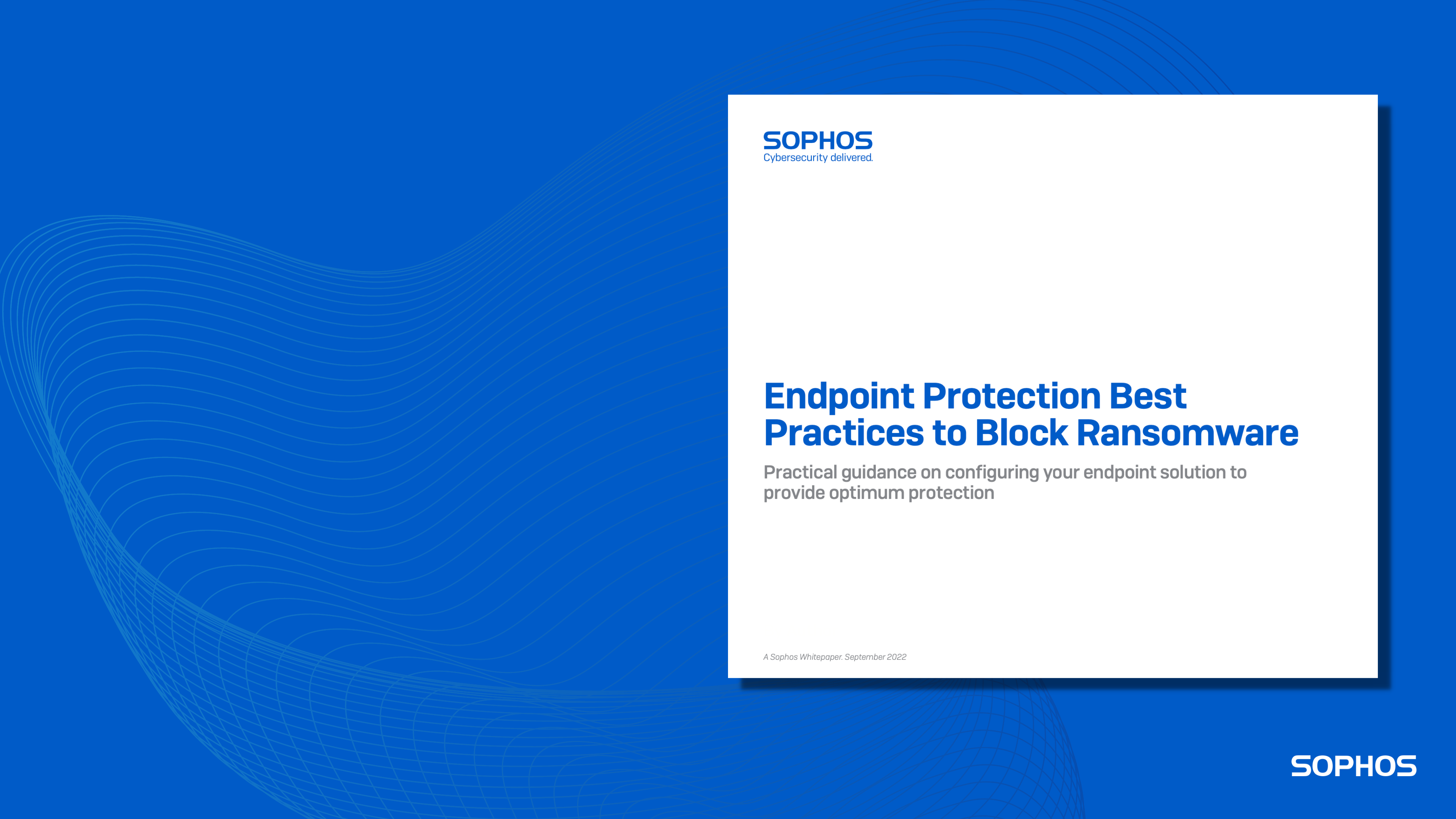Endpoint Best Practices to Block Ransomware

Credit to Author: alexandra.hamer@sophos.com| Date: Tue, 06 Dec 2022 09:00:16 +0000
With 66% of organizations hit by attacks last year, ransomware remains one of greatest cyber threats to organizations across the globe.
The barrier to entry for would-be ransomware actors is now lower than ever, largely due to the seismic shift to the ‘as-a-service’ model that has put advanced threat tactics into the hands of nearly any criminal that wants them. Furthermore, as cyber defenses continue to get stronger, ransomware operators have evolved their approaches in an attempt to bypass today’s advanced protection technologies, abusing legitimate IT tools and even learning new programming languages to evade detection.
Endpoint protection remains one of the most effective ways to defend your devices from ransomware, but it must configured properly to deliver optimum protection. In our recently updated report Endpoint Best Practices to Block Ransomware, and in this article, we share practical endpoint security tips to help elevate your ransomware defenses.
1.Turn on all policies and ensure all features are enabled
Policies are designed to stop specific threats. Regularly checking that all protection options are enabled ensures your endpoints are protected against current and emerging ransomware.
Sophos customers managing their endpoint protection through Sophos Central benefit from the “Account Health Check” tool, which automatically assesses your account configuration to identify potential security gaps and guides you in how to optimize protection. You can learn more about this feature here.
2.Regularly review your exclusions
Exclusions prevent trustworthy directories and file types from being scanned for malware. They are sometimes used to reduce system delays and minimize the risk of false-positive security alerts. Over time, a growing list of excluded directories and file types can impact many people across a network. Malware that manages to make its way into excluded directories — perhaps accidentally moved by a user — will likely succeed. Regularly check your list of exclusions within your threat protection settings and limit the number of exclusions.
3.Enable multi-factor authentication (MFA)
MFA provides an additional layer of security after the first factor, which is often a password. Enabling MFA across your applications is critical for all users who have access to your security console. Doing so ensures access to your endpoint protection solution is secure and not prone to accidental or deliberate attempts to change your settings that can otherwise leave your endpoint devices vulnerable to attacks. MFA is also critical to secure RDP.
4.Ensure every endpoint is protected and up to date
Check your devices regularly to find out if they’re protected and up to date. A device not functioning correctly may not be protected and could be vulnerable to a ransomware attack. Endpoint security tools often provide this telemetry. An IT hygiene maintenance program is also helpful for regularly checking for any potential IT issues.
5.Maintain good IT hygiene
Regularly evaluating your IT hygiene ensures your endpoints and the software installed on them run at peak efficiency. It also mitigates your cybersecurity risk and can save you time when you remediate future incidents.
6.Proactively hunt for active adversaries across your network
In today’s threat landscape, malicious actors are more cunning than ever, often deploying legitimate tools and stolen credentials to avoid detection. To identify and stop these attacks, it’s essential to proactively hunt for advanced threats and active adversaries. Once found, you also need to be able to take appropriate actions to quickly stop them. Tools such as extended detection and response (XDR) enable security analysts to conduct threat hunting and neutralization. Organizations with these technologies should take full advantage of them.
Many organizations struggle to maintain round-the-clock coverage to defend against advanced ransomware attacks — that’s why managed detection and response (MDR) services are key. MDR services provide 24/7 threat hunting delivered by experts who specialize in detecting and responding to cyberattacks that technology solutions alone cannot prevent. They also provide the highest level of protection against advanced, human-led ransomware attacks. To learn more on the benefits of MDR, read our article here.
To explore these best practices in greater detail and to learn how Sophos security solutions elevate your ransomware protection, download our whitepaper here.
Learn More
Sophos Endpoint reduces the attack surface and prevents attacks from running. It combines anti-exploit, anti-ransomware, deep learning AI, and control technology to stop attacks before they impact your systems. It integrates powerful extended detection and response (XDR) with automated detections and investigations, so you can minimize the time to detect and respond to threats.
Learn more and start your free trial.